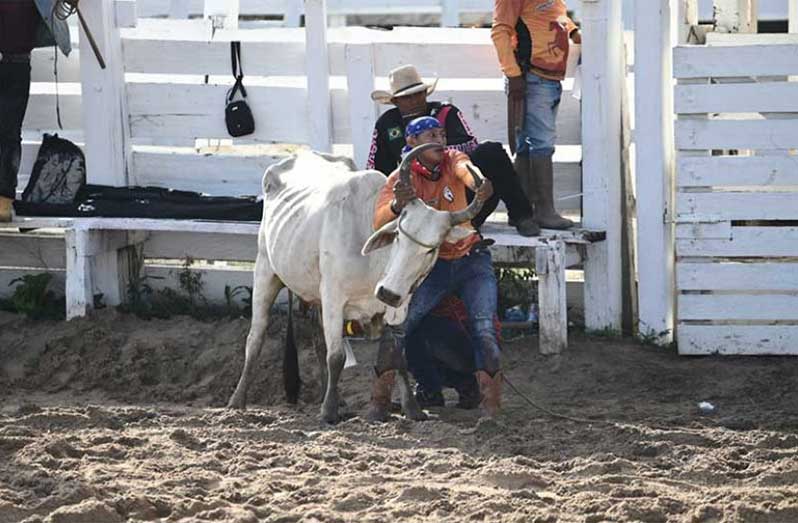EACH Easter weekend, the usually quiet savannahs of the Rupununi roar to life with the thunder of hooves, the cheers of spectators, and the spirited rhythm of tradition.
The Rupununi Ranchers Rodeo, one of Guyana’s most iconic cultural events, has grown into a dynamic economic force for Region Nine (Upper Takutu-Upper Essequibo), bringing with it opportunities for tourism, livestock development, and community empowerment.

What began decades ago as a small gathering of local cowboys and ranchers has been transformed into a nationally celebrated spectacle, drawing thousands of spectators from across Guyana and beyond.
The event showcases bull riding, bareback bronco taming, lassoing competitions, and cultural presentations; each act steeped in the Rupununi’s ranching heritage and Indigenous traditions.
Kyle Joseph, Chairman of the Rupununi Livestock Producers Association (RLPA), emphasised the rodeo’s growing impact.
“This event has grown over the years. It is an event of community; it’s an event for courage, and it’s an event for culture,” he said.
According to Joseph, the rodeo plays a vital role in sustaining the social fabric of the region, while creating a seasonal economic boom that benefits a wide range of stakeholders, from cattle ranchers and artisans to hotel owners and food vendors.
Hotels in Lethem reported full bookings months in advance. Restaurants enjoy increased patronage, and small-scale entrepreneurs, many of them women, sell traditional crafts, local cuisine, and beverages to locals and visitors.
For many families, the income earned during the rodeo helps support them throughout the year.
Regional Chairman of Region Nine, Brian Allicock highlighted the rodeo’s direct link to agricultural development, particularly in the livestock sector. “I look at what is happening from the ranches. We have enlarged the population of our cattle, and we are working with the government in order to realise this dream, so we could have more participation within the rodeo,” Allicock explained.
Allicock added that government support in the form of veterinary services, pasture development, and technical training is enabling ranchers to scale up production, making Region Nine a growing hub for quality cattle rearing.

The rodeo also strengthens partnerships between Indigenous and non-Indigenous communities. Villages surrounding Lethem—the central town, such as St. Ignatius, Kumu, and Shulinab, contribute dancers, food vendors, and support staff, ensuring that the event remains inclusive and representative of the region’s diversity.
While the economic and cultural benefits are undeniable, the rodeo also fosters a sense of pride and continuity among younger generations.
Joesph further explained the event contributes significantly to local economic development and provides a platform for small businesses to thrive.
“There has been so much happening, like construction-wise, people putting together their businesses, people advertising their new tour packages,” Joseph told the Sunday Chronicle.
The rodeo is not only bigger each year, but also more polished, offering improved facilities and newer activities without losing its grassroots charm.
“It’s far-reaching,” Joseph said, noting that the rodeo is now mirroring major festivals like Coachella.


.jpg)











